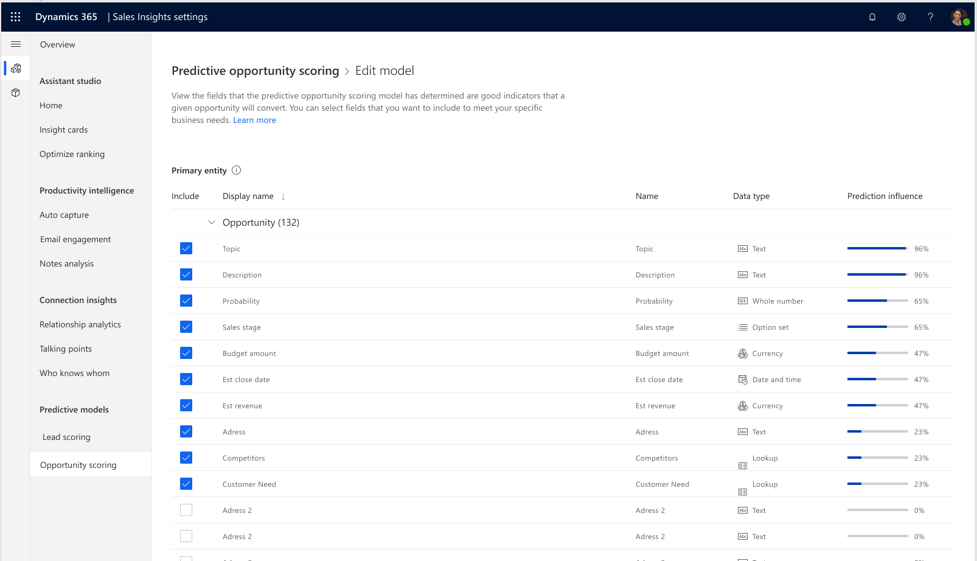
Prioritize opportunities in Dynamics 365 Sales with predictive opportunity scoring
Good prioritization of opportunities boosts salespeople’s efficiency. Lost cases are abandoned early, promising opportunities are not overlooked, and even within the promising ones, sellers would like to make informed decisions on where to invest more.
Predicting which opportunity is likely to be won, also known as Opportunity scoring, is a key factor that supports prioritization decisions. Dynamics 365 Predictive Opportunity Scoring (POS) uses machine learning techniques in order to make opportunity outcome predictions without requiring technical expertise from you as a customer.
The techniques we use are based on Microsoft’s own POS system, leveraging techniques and algorithms that have been proven to boost salespeople’s productivity. We also add generalizations that enable these technologies to work on organizations of many sizes and types. An important component of this generalization is enabling you to customize your predictive scoring algorithms with a friendly UX.

Dynamics 365 Predictive Opportunity Scoring is shipped with Sales Insights.
How does customizable predictive opportunity scoring work?
First, POS analyzes historical opportunities and related entities, comparing statistics on won and lost opportunities. Advanced machine learning algorithms identify attributes that are important to predicting won/lost opportunities, and automatically build a prediction algorithm tailored to your data.
We also let you customize this selection by adding and removing data that you may want to include/exclude in the modeling pipeline based on your business processes, using the following UX.
In the next step, we make the prediction itself for each opportunity, by correlating it with the patterns learned in the previous step. The higher the score is, the more likely the opportunity is to be won, based on past data. For example, if opportunities with a high level of activity have a higher correlation with success, our model will detect this and will produce a higher. As in predictive lead scoring, a variety of models can be applied, depending on the complexity of the data.
Here is an example of the final result in a grid view. In the first screenshot, 1 designates the opportunity score column, 2 represents the trend of prediction (improving, declining, or steady), and 3 represents the opportunity grade, which you can define according to your business’s needs.


Try Dynamics Predictive Opportunity Scoring
We encourage you to explore the predictive lead scoring capabilities in Dynamics 365 Sales Insights to understand how it helps your sales team prioritize opportunities, achieve higher win rates, and reduce the time that it takes to qualify a lead.
Sign up for a free trial to get started and review the full capabilities of Dynamics 365 Sales Insights.
We’d love to hear from you
Our applied science team loves to hear from customers. If you’re already using predictive opportunity scoring and have feedback, questions, or new needs, we’d love to hear from you at D365AISales@microsoft.com.
To understand the full capabilities of Dynamics 365 Sales Insights and the value they bring to Dynamics 365 customers, visit Dynamics 365 Sales Insights. To get started with POS, visit our documentation.



